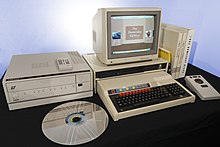| Battle of Dun Nechtain | |||||||
|---|---|---|---|---|---|---|---|
| Part of the Pictish-Northumbrian conflicts | |||||||
 Pictish symbol stone depicting what was once generally accepted to be the battle | |||||||
| |||||||
| Belligerents | |||||||
| Pictland | Northumbria | ||||||
| Commanders and leaders | |||||||
| Bridei III | Ecgfrith † | ||||||
The Battle of Dun Nechtain or Battle of Nechtansmere (Old Welsh: Gueith Linn Garan) was fought between the Picts, led by King Bridei Mac Bili, and the Northumbrians, led by King Ecgfrith, on 20 May 685.
The Northumbrian hegemony over northern Britain, won by Ecgfrith's predecessors, had begun to disintegrate. Several of Northumbria's subject nations had rebelled in recent years, leading to a number of large-scale battles against the Picts, Mercians and Irish, with varied success. After sieges of neighbouring territories carried out by the Picts, Ecgfrith led his forces against them, despite advice to the contrary, in an effort to reassert his suzerainty over the Pictish nations.
A feigned retreat by the Picts drew the Northumbrians into an ambush at Dun Nechtain near the lake of Linn Garan. The battle site has long been thought to have been near the present-day village of Dunnichen in Angus. Recent research, however, has suggested a more northerly location near Dunachton, on the shores of Loch Insh in Badenoch and Strathspey.
The battle ended with a decisive Pictish victory which severely weakened Northumbria's power in northern Britain. Ecgfrith was killed in battle, along with the greater part of his army. The Pictish victory marked their independence from Northumbria, who never regained their dominance in the north.
https://en.wikipedia.org/wiki/Battle_of_Dun_Nechtain
The Luttra Woman is a skeletonised bog body from the Early Neolithic period (radiocarbon-dated c. 3928–3651 BC)[2] that was discovered near Luttra, Sweden, on 20 May 1943. Because her stomach contents showed that raspberries had been her last meal[3] and she was estimated to have been a teenager or young adult at the time of her death,[4] she was nicknamed Hallonflickan (![]() listen (help·info); lit. 'Raspberry Girl'). As of 2017, she was the earliest-known Neolithic person from Western Sweden.[2]
listen (help·info); lit. 'Raspberry Girl'). As of 2017, she was the earliest-known Neolithic person from Western Sweden.[2]
No trace of injuries or fatal diseases was found on her body. She appears to have been tied up before her death and deliberately drowned.[5] Axel Bagge, an archaeologist who assisted at the initial investigation of the body, suggested that she had been either a human sacrifice or executed.[6][7] Her body has been on a permanent exhibition titled Forntid på Falbygden (lit. 'Prehistory in Falbygden') at the Falbygdens Museum, Falköping, since 1994.[1]
https://en.wikipedia.org/wiki/Luttra_Woman
Digital obsolescence is the risk of data loss because of inabilities to access digital assets, due to the hardware or software required for information retrieval being repeatedly replaced by newer devices and systems, resulting in increasingly incompatible formats.[2][3] While the threat of an eventual "digital dark age" (where large swaths of important cultural and intellectual information stored on archaic formats becomes irretrievably lost) was initially met with little concern until the 1990s, modern digital preservation efforts in the information and archival fields have implemented protocols and strategies such as data migration and technical audits, while the salvage and emulation of antiquated hardware and software address digital obsolescence to limit the potential damage to long-term information access.[3][4][5]
https://en.wikipedia.org/wiki/Digital_obsolescence


No comments:
Post a Comment